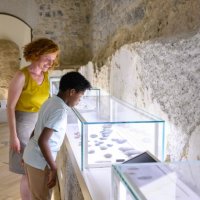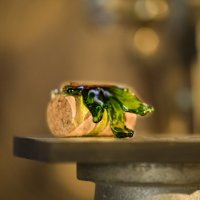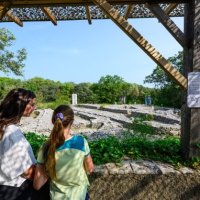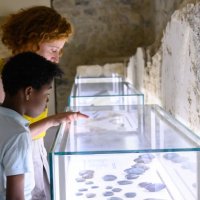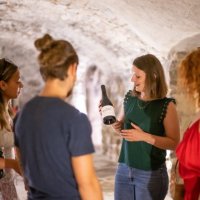Medieval Road-Trip in Pic Saint-Loup

In the Grand Pic Saint-Loup, there are many traces of the Middle Ages. From villages to villages, from churches to castles, taking the back roads of the Grand Pic Saint-Loup offers history buffs and the simply curious a real journey back in time.

Here are a few points of reference for a beautiful itinerary around the Pic. Follow the guide...
1 - The Château de Baulx
Overlooking the beautiful village of Saint-Jean-de-Buèges, Château de Baulx is an 11th and 12th century fortress that was altered and enlarged in the 14th and 15th centuries.
In the 18th century, the castle fell into disuse and was even used as a stone storehouse, before being restored in 1990. Today, it is a focal point for the village and its festivities.
The château is the venue for guided tours in summer and even storytelling walks. It also hosts exhibitions, conferences and
and concerts.
Don't miss: In February, the Saint-Jean-de-Buèges farmers' day, dedicated to truffles, wines and local produce.

2 - The church square
Would the English have stayed in the region?
It seems more likely that the word "London" comes from the Occitan "loundras", meaning "marshes".
"marshland". The region was marshy before the Benedictine monks carried out the drainage work and built the fortified village of Saint-Martin-de-Londres.
Today, the medieval heritage has been harmoniously integrated into the village, creating a veritable showcase for its jewel: the Romanesque church of Saint-Martin.
To help youngsters discover Saint-Martin-de-Londres, follow the clues of mascot Léo, the ocellated lizard, on a discovery rally.
Information from the Grand Pic Saint-Loup Tourist Office.

3 - the narrow streets of the village
In the 13th century, Les Matelles was considered the "capital" of the Republic of Montferrand thanks to the charters and franchises granted by the Bishop of Maguelone, Count of Melgueil (Mauguio) and Montferrand.
The village has preserved its cobbled streets, stone houses with outside staircases and vaulted passageways from that era, giving it a timeless charm that invites you to stroll and wander.
Don't miss the Museum of Art and Archaeology, housed in the Maison des Consuls in the heart of the village.

4 - The heart of the village
As you wander through the streets of the town, you'll find yourself wandering between the past and the present, discovering architectural remains from the Middle Ages and the skills of the village's many craftsmen and women.
Tucked away behind its medieval walls, which in the 15th century protected the inhabitants from danger, Viols-le-Fort is a fine example of preserved heritage.
From Viols-le-Fort, you can set off on the Sentier des Drailles, leading to the eponymous dolmen: a hiking trail laid out on this ancient land of transhumance.

5 - Castle of Viviourès
Formerly the property of the Comte de Melgueil, the château was used as a stronghold and a residence, and changed its name several times. The current name comes from the Bevieures family, who lived there in the 18th century. From the Occitan "bien viure", it evokes a place where life is good.
Now closed to visitors, it remains a visual reminder of the medieval past opposite the Château de Montferrand, marking the entrance to a magnificent road linking Saint-Mathieu-de-Tréviers to Saint-Martin-de-Londres, via the Col de Fambetou.

6 - A charming little square
In the heart of the village of Guzargues, visit a small square lined with pretty facades: you'll see a restored bread oven and the determination of its inhabitants to keep the village in bloom.
Don't miss the small Romanesque church, listed as a historic monument, flanked on two sides by the buildings of the former presbytery.


